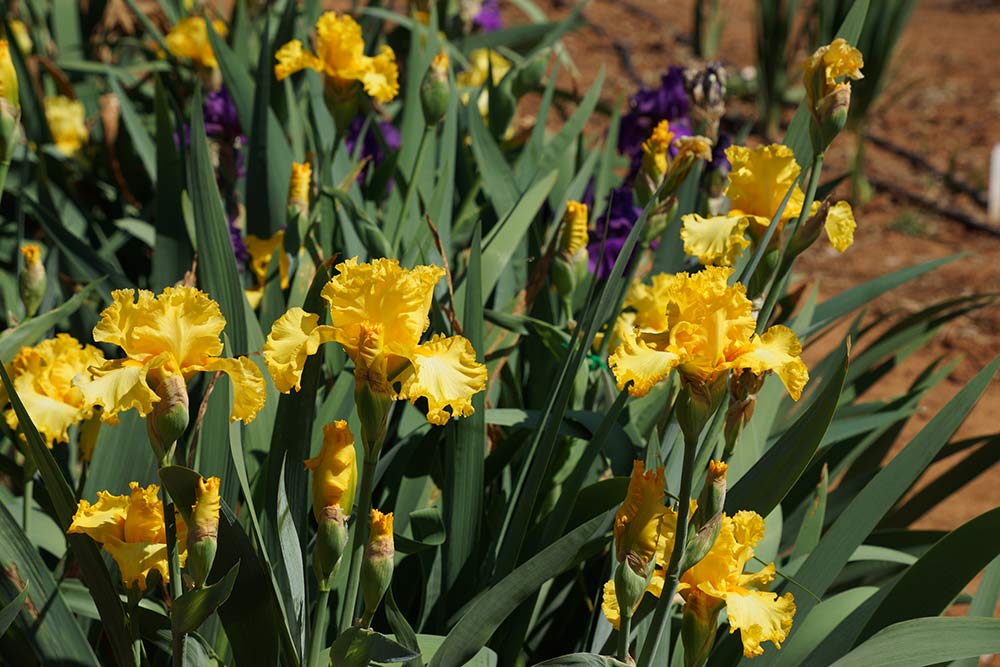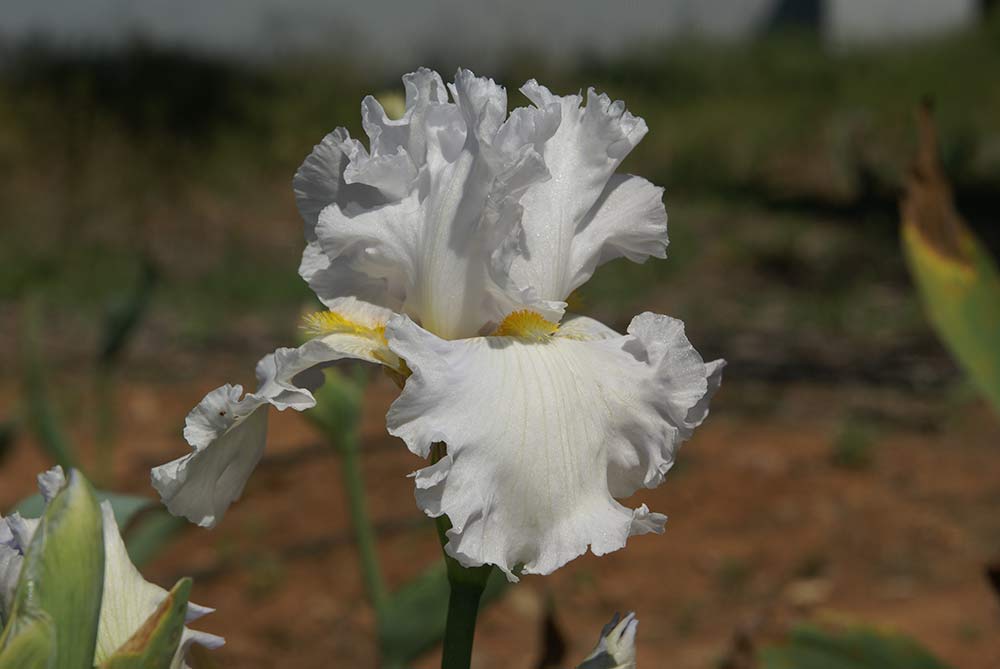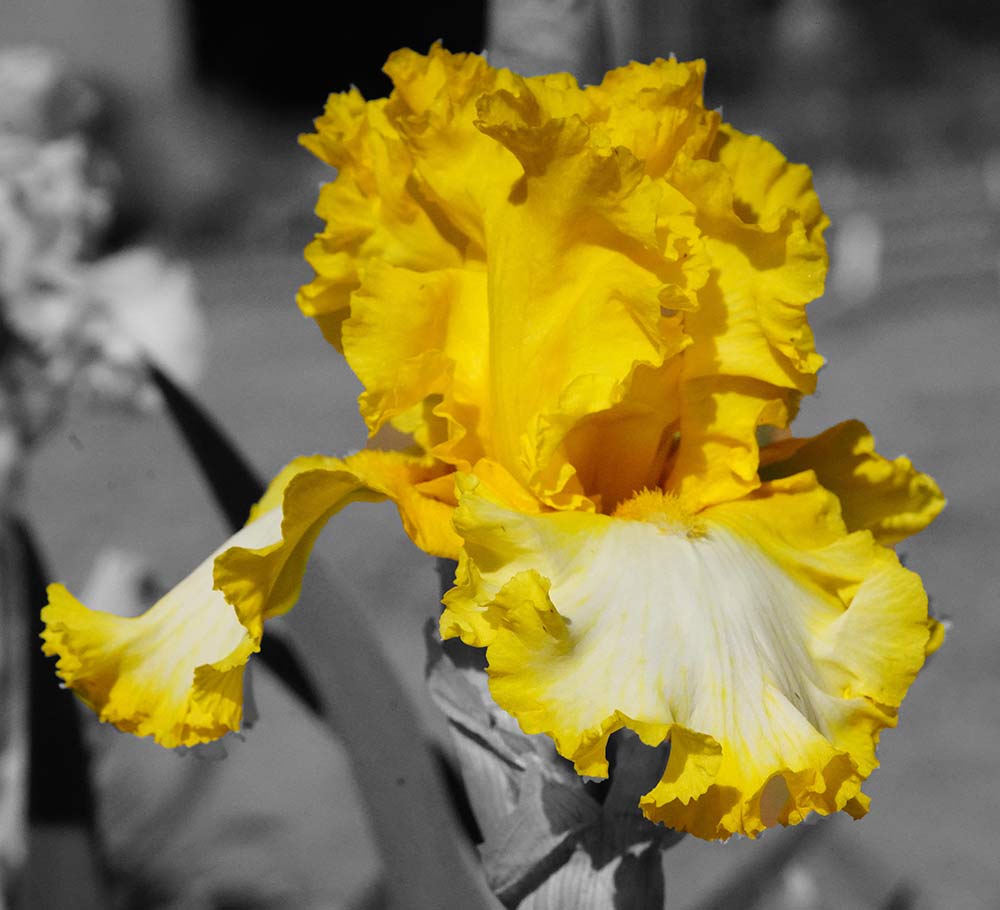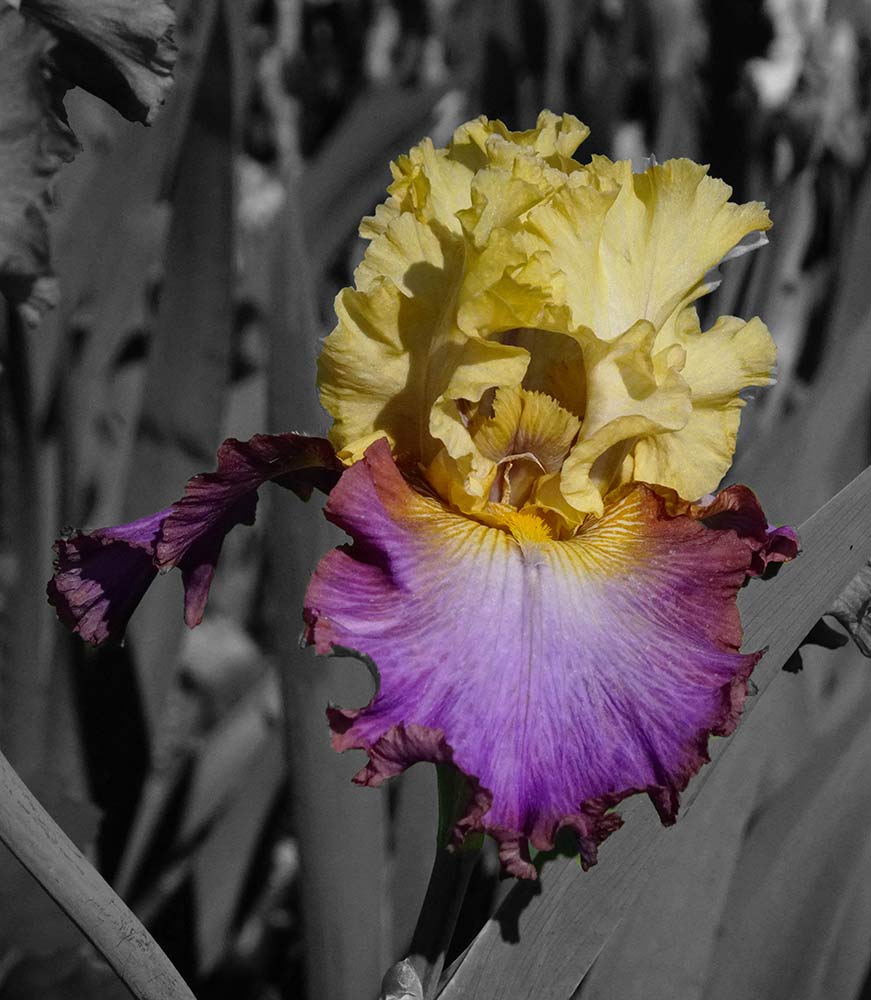Tall bearded iris are regarded as the ‘flower of the rainbow’ and are hardy perennials grown from rhizomes. They survive in most climates but do like cold winters.
Bearded iris are best planted in a well prepared and fertile soil in an open position that gets as much sun as possible. They like a PH of 6 to 7 (neutral). If you wish to use animal manures, place it underneath the rhizomes and cover with a little soil so the roots will grow down into it. Placing it near the rhizome may cause rot. The incorporation of a small handful of 8-9 month slow release fertilizer in the soil at planting time is a good idea. If you are using good composted soil with a neutral PH, then you may not need any fertilizer.
When planting new irises, they will discard their old roots and set down new roots before they begin to regrow the foliage. It is a good idea to water them well until the new green leaves appear, (usually about 3 weeks) especially in hot dry climates. Once the new leaves start to grow, they can be watered once a week or whenever you water your other garden plants. Irises need a well drained soil as they don’t like ‘wet feet’. They can take plenty of water so long as it drains away.



